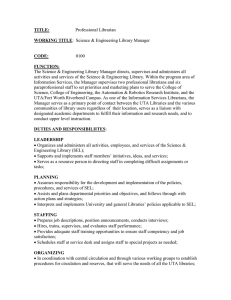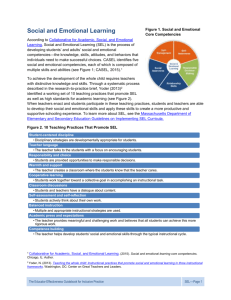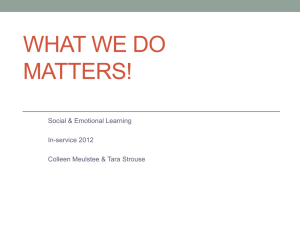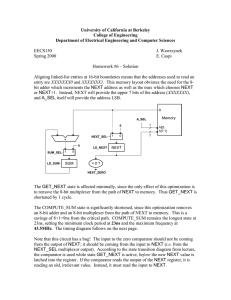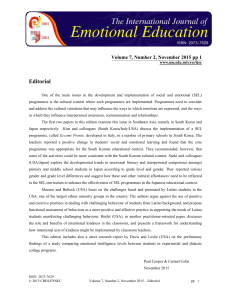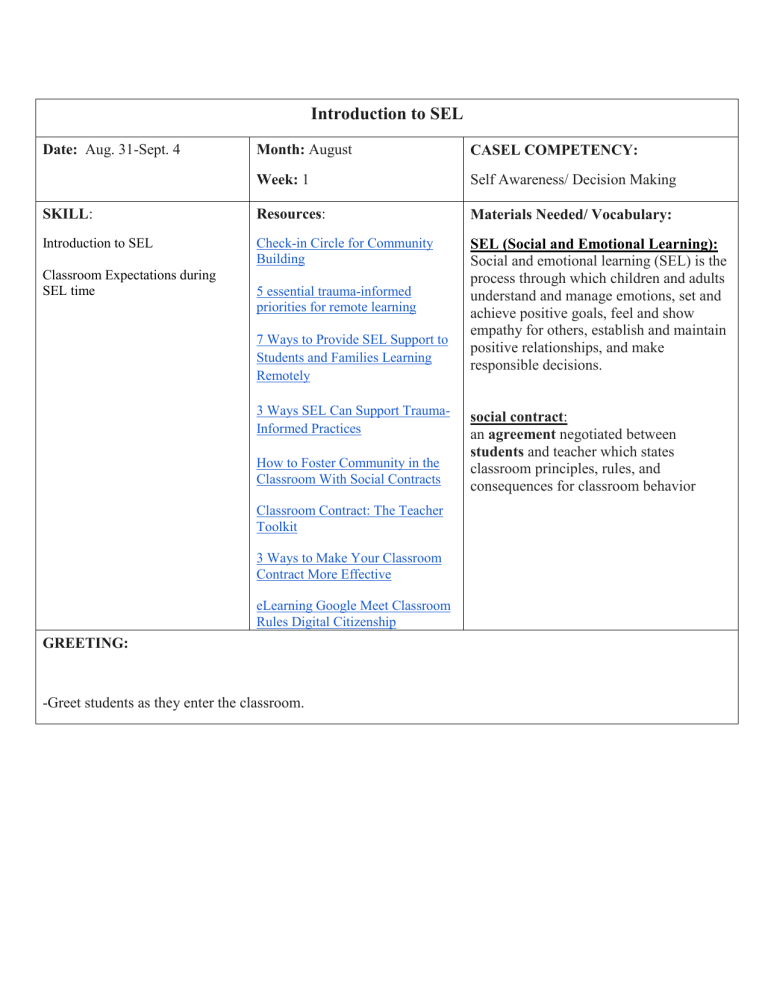
Introduction to SEL Date: Aug. 31-Sept. 4 Month: August CASEL COMPETENCY: Week: 1 Self Awareness/ Decision Making SKILL: Resources: Materials Needed/ Vocabulary: Introduction to SEL Check-in Circle for Community Building SEL (Social and Emotional Learning): Social and emotional learning (SEL) is the process through which children and adults understand and manage emotions, set and achieve positive goals, feel and show empathy for others, establish and maintain positive relationships, and make responsible decisions. Classroom Expectations during SEL time 5 essential trauma-informed priorities for remote learning 7 Ways to Provide SEL Support to Students and Families Learning Remotely 3 Ways SEL Can Support TraumaInformed Practices How to Foster Community in the Classroom With Social Contracts Classroom Contract: The Teacher Toolkit 3 Ways to Make Your Classroom Contract More Effective eLearning Google Meet Classroom Rules Digital Citizenship GREETING: -Greet students as they enter the classroom. social contract: an agreement negotiated between students and teacher which states classroom principles, rules, and consequences for classroom behavior Activity: INTRODUCTION: -Introduce Wednesday SEL time to the students. Each week we will have an hour set aside for SEL time. SEL stands for Social Emotional Learning. SEL is defined as a time to understand and manage emotions, set and achieve positive goals, feel and show empathy for others, establish and maintain positive relationships, and make responsible decisions. During this time we will be doing weekly check ins and short activities. Attendance will be taken. ACTIVITY: -Create a social contract for SEL time. One way to encourage responsible decision making is by collaborating with your students to create a classroom contract. An effective classroom contract should contain two things: your expectations as a teacher and your students’ own hopes and needs for the school year. Creating this with your students can help them feel like their voices are heard and that you’re willing to listen. You can include “exciting” information like class incentives/activities. It’s fun and, more importantly, establishes your classroom environment as one where everyone’s choices matter. 1. Ask students' opinions Allow students time to brainstorm problems that they face in class and at school. For example, students may state that they suffer from bullying, classroom disruptions, or disrespectful behavior. 2. Ask for students' ideas Once the problems have been outlined, the students and teacher collaborate to create solutions.. Use positive language when possible. This gives students a clearer idea of how they should react to problems they encounter, which is more effective than only telling them how they should not behave. 3. Summarize students' ideas Facilitate a class discussion to gather feedback from the students before moving on to the next step. Emphasize that it is important for the Classroom Contract to include rules that students believe in and that they will adhere to as individuals and as a group. Ensure that the list contains all behavioral objectives you deem necessary. If not, guide the students to add any behavior goals that they originally missed while brainstorming. Additionally, have students think about what could be removed from the list. 4. Turn ideas into rules Create a poster or anchor chart to display the finalized rules. The rules will likely include guidelines such as: actively listen to the speaker, be kind, be respectful, participate, etc... 5. Agree to the contract To create ultimate student ownership, allow time for each student to read through the contract and agree with it. If students were in person, each student would sign it. Virtually you can have each student agree with the contract by placing a yes in the chat. 6. Review the contract Hold intermittent Classroom Contract discussion sessions. Ask students to assess progress and determine if any contract amendments should be made. Things to think about with Class Contract: SEL time will include discussions, prompts and mindfulness. You will want something in the contract to address being respectful while others are speaking, how to pass if you are not comfortable sharing during discussion time and what to do if you are not comfortable doing the mindfulness activities (turn off camera and do them in private, sit quietly and listen, etc…) Students should not be forced to do activities if they feel uncomfortable. Examples of Social Contracts: Prompt: Prompts can be used as a way to end the lesson. Students can take turns unmuting and sharing their answer to the prompt or putting the answer to the prompt in the chat bar. Teachers are also able to use the prompt as a writing prompt if they would like students to keep an SEL journal, How are you finding ways to connect with others during this time of virtual learning?
